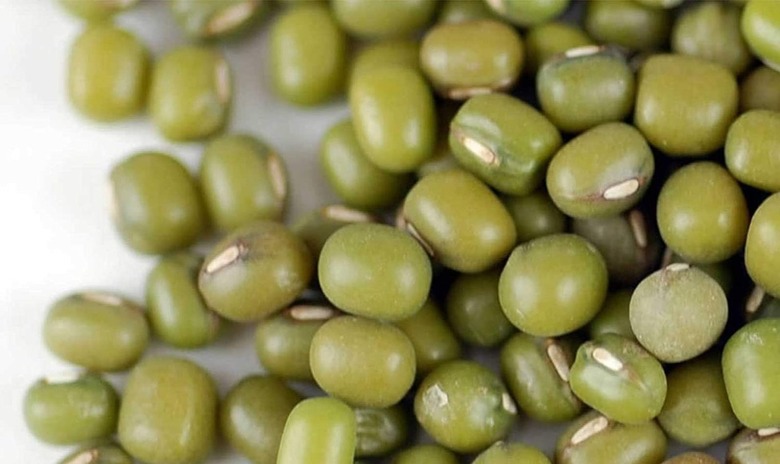Factors For The Germination Of Mung Beans
We may receive a commission on purchases made from links.
Mung beans are one of the two most popular types of legumes used to grow sprouts, but that's just one of its many uses. This bean, grown for centuries in India and other parts of Asia as well as Africa, can be used as a dry bean for human food as well as for a green crop. They are fairly easy to grow in the appropriate climate.
Meet the Mung Bean
Meet the Mung Bean
The mung bean (Vigna radiata) is widely grown in many parts of the world both as a protein-rich legume and to germinate for sprouts. In the United States, the beans are grown in the Southwest, where millions of pounds of beans are produced, largely in Oklahoma and Texas. Almost all of the production in the U.S. is used to produce bean sprouts.
Many Americans enjoy mung bean sprouts in Asian meals and in salads without actually associating them with the mung bean crop. Like pea plants and bean plants, mung bean plants grow relatively tall. They can grow to 24 inches tall, and they produce clusters of slender, fuzzy pods that are 3 to 4 inches long, each having 10 to 15 seeds inside. The sprouts are the shoots produced when the seeds are germinated.
Grow Mung Bean Plants
Grow Mung Bean Plants
Mung beans are a warm-season (summer) crop. They need between three and four months of frost-free conditions from planting to harvest. If you want to try your hand at growing mung beans, plant them at any time after the end of May through mid-June. Wait until the soil has warmed to 65 degrees Fahrenheit. Plant the seeds 1 inch under the soil surface and 2 inches apart in rows about 36 inches apart. Nitrogen fertilizer is not necessary since mung beans are legumes that fix their own nitrogen.
It's important to weed the garden bed regularly since mung beans do not compete well for water or nutrients. Shallow hoeing works well. Look for the beans to start forming when the plants are 15 inches tall. They will be mature and ready to harvest about 100 days after planting. Harvest them when more than half of the seed pods are mature. Dry the seeds on newspaper.
Make Mung Bean Sprouts
Make Mung Bean Sprouts
To make mung bean sprouts, it is necessary to germinate the mung bean seeds. Given their long history, it is no surprise that there are many different methods used for sprouting the mung beans.
The easiest way to grow mung bean sprouts is to treat them like microgreens. Soak the beans in water for some eight hours in a dark location. Then, drain the beans and place them in tubs with adequate drainage, again in darkness. Sprinkle them with water three times a day and watch them grow. You'll have sprouts ready for your salad in four to six days. The sprouts are ready for use when they are about 1 inch long.
To get the best germination rate, watch these elements: temperature of germination room (should be 65 to 70 F), sufficient water when germinating (should be sprinkled three to four times a day), and adequate drainage when the beans are germinating.
References
- University of Florida IFAS Extension: Bean Sprouts — Phaseolus aureus R. and Glycine max (L.) Merr.
- University of Florida IFAS Extension: Bean, Mung — Phaseolus aureus Roxb
- Mother Earth News: Sprouting and Growing Mung Beans in Your Garden
- University of Arkansas: Mung Beans
- Purdue University: Mungbean
